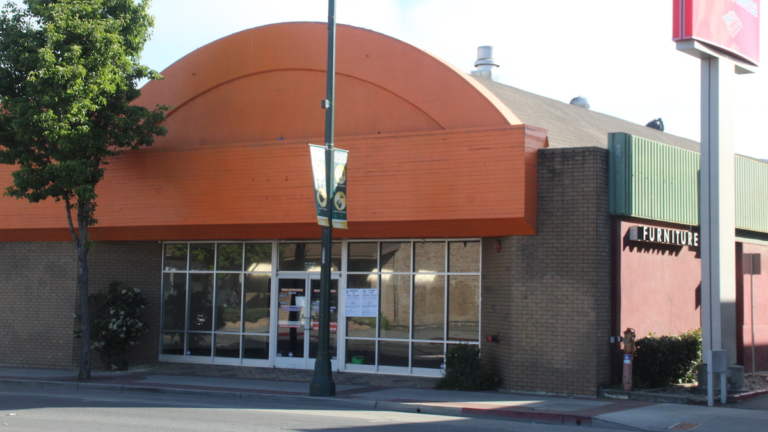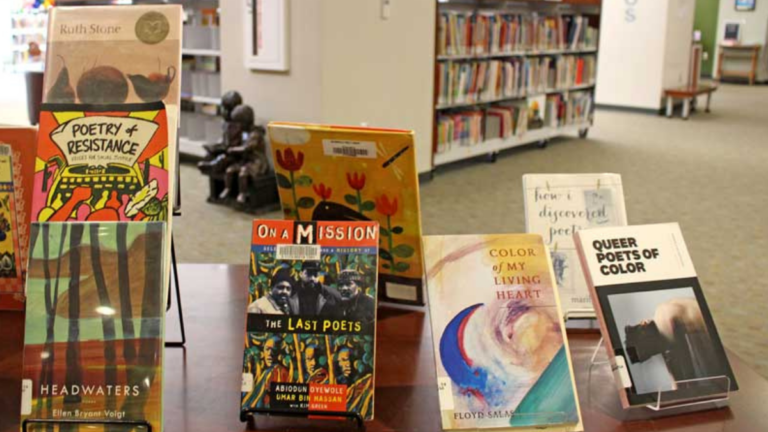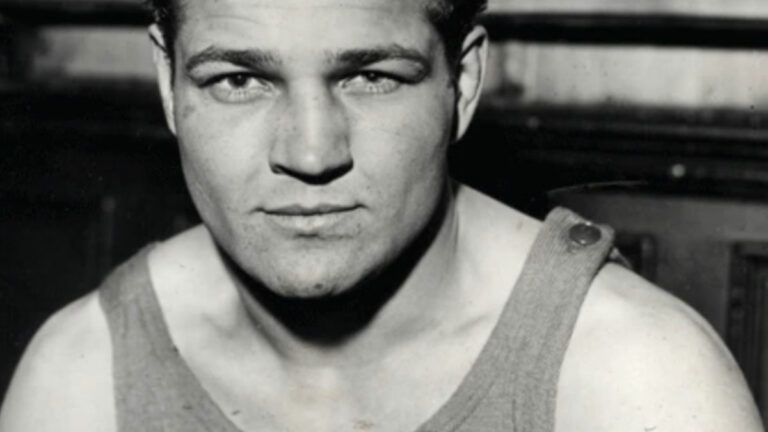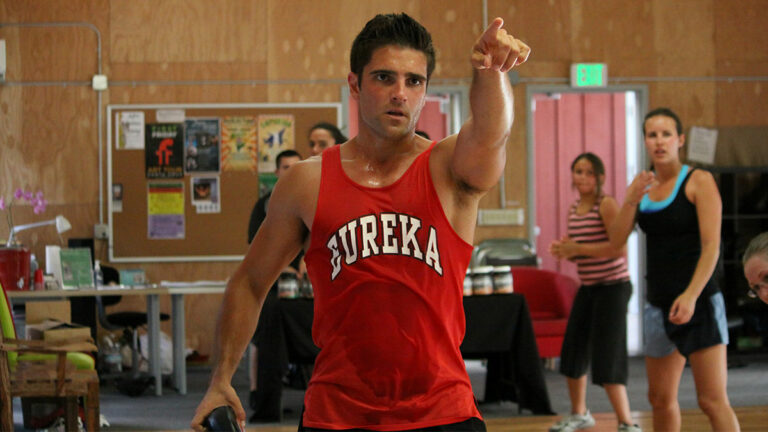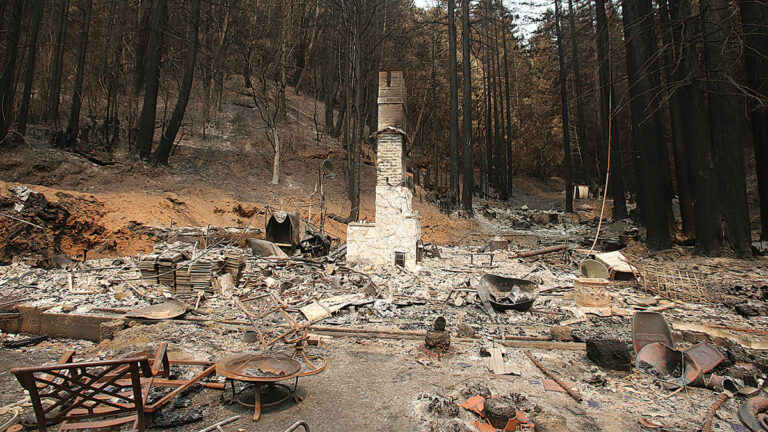By day, Billy “Bad Ass” Prusinowski teaches eighth-grade language arts and social studies at Cesar Chavez Middle School in Watsonville. But after hours, like some kind of classic superhero, the charismatic 36-year-old takes on another identity as a kickboxing guru and folk dancer.
Like any good superhero, Prusinowski has a surprising secret in his origin story. In this case, he’s the great-nephew of a Lithuanian-Polish boxing legend almost lost to history—Babe Risko, née Henry Pylkowski, born in 1911 after his family immigrated to the U.S. Risko took on his catchy fighting name to give himself a new, performance-ready identity. So did Prusinowski.
In fact, his “Billy Bad Ass” moniker was granted to him twice, coincidentally, by Ukranian dancers at “Kozak nights” in New York City, and by his first boss at what was at the time Gold’s Gym in Santa Cruz.
“So it had to stick,” he says. “It’s catchy. People either laugh with me or laugh at me, but either way they’re laughing.”
Prusinowski teaches Risko Kickboxing by night in venues such as Santa Cruz Power Fitness, UCSC, and others, which are slowly beginning to resume in-person after a year on Zoom. He’s also the founder of the Bay Area’s Zoloti Maky (Ukranian for golden poppies) dance group, leading classes and choreographing traditional Ukranian folk dances at Morgan Hill’s Ballet Academy of Silicon Valley.
So what ties his day job to the many pursuits of his alter ego?
“I’m an educator,” Prusinowski says.
And performance is his medium. Prusinowski had briefly given up Ukranian dance in high school because it “wasn’t cool,” but found his way back after a short break.
Traditional Ukranian folk dance and boxing end up being a more complementary combo than one might initially think, which is all about the backstory of these Ukranian storytelling dances. “Ukranian dance solos stem from Kozak freedom fighters coming back from battle,” Prusinowski says. “It’s kind of a macho thing, proud solos and stuff.” Both are quite hard on the legs—think lots of squatting, lunging, and jumps.
Marisa Visnaw, owner and artistic director of the Ballet Academy of Silicon Valley, says Prusinowski “gives our young male dancers a role model and someone to look up to.” BASV offers Ukranian dance for all levels, co-ed, and boys classes for children five and up. A pandemic silver lining for Prusinowski has been a young dancer in his Morgan Hill class studying Ukranian dance online with Prusinowski’s New York company. For the last month, his Ballet Academy of Silicon Valley kids class has been back in person with small groups and health protocols. The group is performing virtually as part of the Calgary Ukranian Festival, to be livestreamed June 5-6.
YOU REMIND ME OF THE BABE
While he’ll continue teaching and performing Ukranian dance, Prusinowski is also in the process of shifting his focus and expanding his offerings. “Now I’d rather teach about this family legacy,” he says, “because it celebrates both fitness and the immigrant story.” His goal is to further align with his great-uncle’s tradition in the hopes that both he and Babe Risko’s legacy can reach wider audiences.
The son of first-generation Polish immigrants in Syracuse, New York, the man who became known as Babe Risko learned to fight in the Navy, in which he enlisted at 17 using falsified documents. He went on to become World Middleweight Champion in 1935-36 before he died unexpectedly at age 46, of a “massive coronary infarction,” according to the elder Bill Prusinowski, Billy’s dad.
Risko became a champion fighter during his naval service in the early 1930s prior to defeating Teddy Yarosz to claim the Middleweight World Champion title in September 1935. He was one of those figures who was famous in his time, but while some boxing champions such as Mohammed Ali and Carmen Basilio have gone on to claim places in collective national memory, boxing halls of fame, or both, Babe Risko fell into near-total obscurity, perhaps because of his early and untimely death.
But he isn’t completely forgotten. Risko is a local celebrity in his birthplace and was inducted into the Greater Syracuse Sports Hall of Fame. Now, here in Santa Cruz, Prusinowski is sharing Risko’s story in the hopes of fortifying his great-uncle’s legacy, that Risko might still somehow become a household name. With Prusinowski’s father’s recent biography The Babe Risko Story, this story of a would-be boxing legend might get another chance.
“His boxing was famous, and should still be famous, if it weren’t for his being abused and exploited by the corrupt, Mafia-owned National Boxing Association in the 1930s,” Prusinowski says. This backstory of how fights were rigged and mobsters such as Frankie Carbo—called in the Observer Sport Monthly “the mob’s unofficial commissioner for boxing” who “controlled a lot of the welters [welterweight 140-147 pounds] and middles [middleweight 152-165 pounds]”—is examined in detail in The Babe Risko Story. Carbo, Gabe Genovese, and their ilk were persistently behind the scenes “pulling the strings of … invisible control of the fight game,” as the elder Prusinowski writes in The Babe Risko Story. Both spent time at Rikers for “unlicensed management” of boxers.
There’s more than enough intrigue for a Hollywood biopic—and considering his Bad Ass descendent is a dead ringer for Risko, a perfect candidate to play him, as well.
“I look like him,” Prusinowski agrees. He could easily play Risko, who was known for his good looks, in a movie version. (Gina Garcia, the founder and head instructor of Worldanz—where Prusinowski has taught Ukranian dance—approves, saying “he’s so charismatic, he’d be great in movies, in Hollywood.”
Prusinowski sees his great-uncle’s legacy as an untold story along the lines of “that kind of movie about some random character in history, that you’ve never heard of, but that once you learn about them, realize you loved their life story.”
BALLET AND BREAKDANCING HAD A BABY
But why settle for being just a Risko doppelganger? Through the design of his kickboxing classes combined with the physical resemblance, Prusinowski has come as close as possible to resurrecting his relative. His style and methods are inspired by and modeled after what he has learned and observed of Babe Risko’s boxing style.
“He never has an off day,” Garcia says. “He’s passionate, super-on, just into it, into life. When I hire him to teach Ukranian [dance], everyone’s like, ugh because it’s hard! It’s like ballet and breakdancing had a baby. It’s one of the toughest dance forms. I love it. He’s really good at it, he’s been doing it his whole life.”
It’s no exaggeration. Ukranian dance and martial arts were the staples of Prusinowski’s childhood in Syracuse, New York.
“My dad’s karate dojo was a humongous part of my life,” he says on a chilly evening by the tennis courts at UCSC. “I did karate from my dad, Ukranian dancing from my mom. She put me in it because there’s a tight Ukrainian community in Syracuse.” It was also because of that community and the tradition of oral history that he learned about his great-uncle Risko, who died before Prusinowski was born. “My Uncle Thomas, Babe’s dad, escaped Russian soldiers wanting to kill him, so [he] hid himself in a pickle barrel to escape and ended up in America. My Lithuanian cousins swear by that story.”
Though Prusinowski kept Risko Kickboxing alive on Zoom during the pandemic, he’s excited for restrictions to ease so he can get back to his signature energetic offerings in person. A brisk spring evening on the UCSC campus brings the first opportunity.
Prusinowski estimates that during pre-Covid times, a UCSC class could draw up to 50 students and staff, but as group fitness is only just beginning to return, six students gather on the outdoor tennis courts, more of an inch toward normalcy than a leap. As the music kicks in, though, there is plenty of jumping.
It’s after 5pm and gusty, but inside the tennis court, the sun still beats down over the asphalt, already setting the stage for a sweaty experience. With Prusinowski bringing together his background in karate, boxing, dance, and self defense, the class moves dynamically through combos that are Babe Risko-inspired on the punching end, and kick sequences that are also taught in Prusinowski’s father’s Kenpo Jutsu Karate.
Using his punching mitts to guide students through the combo, the class moves through “front hand jab, rear hand straight punch, front hand hook, rear hand uppercut.” He demonstrates examples of the combos on his TikTok (@billyprusinowski) so practitioners can reference them on the go.
In the KJK Kicking Combo, rather than “leg swings like they usually do in generic cardio kickboxing,” Prusinowski explains, he demos Kenpo Jutsu Karate’s front snap kick, shuffle side kick (“instead of side leg raises”), rear kick in place of “back kicks or back swings,” and others influenced more by his childhood training in the classic art of self-defense at his father’s dojo, rather than kicks that might be effective for burning calories—but not so much for fending off an attacker.
The outdoor cardio kickboxing workout is all this and more: high reps, a Tabata sequence of squats and lunges, even cartwheels (optional) make for a total-body conditioning experience, which can be taken on its own or as cross-training with other martial arts, sports, or practices like yoga or surfing.
ACTIVIST ATHLETE
Perhaps Prusinowski’s Risko Kickboxing will catch fire in the booming post-pandemic flock back to group fitness classes. What is certain is that Prusinowski is no average instructor.
“I am lucky to call Billy a friend and always look forward to his warm, smiling face,” Camile Periat, owner of Santa Cruz Power Fitness and social media fitness industry influencer, writes via email. “Because of his charisma, the man otherwise known as ‘Vegan Billy Badass’ pulls in quite the crowd and has a large following. He knows how to keep the class moving.”
Periat praises him as “a phenomenal kickboxing instructor, one of the most positive people out there with high energy.”
And one of the greatest fitness gurus in Santa Cruz, Garcia agrees.
“I took his kickboxing class at Santa Cruz Power Fitness,” she says. “You’d have pumpin’ music and he was very motivating. Even though he’s younger than me, he’s mindful of joints, making it sustainable, low impact. It’s a very intelligent class. It won’t wear you down but everyone gets excited and pumped.”
With sweat cooled and post-workout soreness setting in (at least for me), Prusinowski sits on a bench in the wind overlooking the school’s East Upper Field and the Monterey Bay as the fog bank rolls in. He speaks on how he draws from his wide variety of lived experience to create his offerings.
“My parents are gonna hate when I say growing up in Syracuse was very boring,” he admits. But they will also more likely be glad they were the reason it wasn’t entirely a snoozefest. Coming of age in the Ukranian community in Syracuse was essential to shaping who “Billy Bad Ass” would become.
Prusinowski arrived in this area more than a dozen years ago, in his early twenties. “Ukranians from Syracuse have stuck in Syracuse,” he says. But after growing up there and graduating from Syracuse University, Prusinowski pulled up his roots. After a brief reprieve in Portland, Oregon, he landed in Santa Cruz in 2009, at first staying with friends he met through mutual activist work.
Prusinowski’s activism has always been central to his identity. For a long time this activism revolved around veganism, and he entered competitions as part of a growing movement of vegan bodybuilders. (He has since given up on bodybuilding, but has remained a committed vegan since high school.)
“Vegan athletes all stand for the animals,” he says. “That’s cool, I’d like to think my ‘gainz’ are way more important than anyone else’s who just wants cute muscles, because I am proving it can be done while still saving animals’ lives.” It illustrates his primary out-of-the-ring realization and philosophy as an instructor: “Fitness should stand for something. Something beyond just vanity.”
Prusinowski’s activism has shapeshifted over the years but has remained a constant, central tenet of his life and identity. Lately, that aspect of his work centers around anti-racism and—tying in to his work with Watsonville’s students, as well as his family story—immigration.
“Stalin starved Ukranians off their lands, forced famine; they came to Canada in the 1930s, there were all these diasporas up there …. I appreciate immigrant stories. I am fourth generation, privileged and white, so I don’t have the same immigrant experience at all, but I think my Uncle Babe did. I admire the struggle of all of the Mexican immigrants I teach every year at Cesar Chavez. I am still figuring out how to celebrate the immigrant story—my politics—and work it into my fitness classes—my passion.”
Billy Prusinowski is at @billyprusinowski on Instagram. His Ballet Academy of Silicon Valley group performs Ukranian dance June 5-6 at the virtual Calgary Ukranian Festival, which will be livestreamed at calgaryukrainianfestival.ca. More about Ballet Academy of Silicon Valley’s Ukranian program can be found at balletsv.com.


